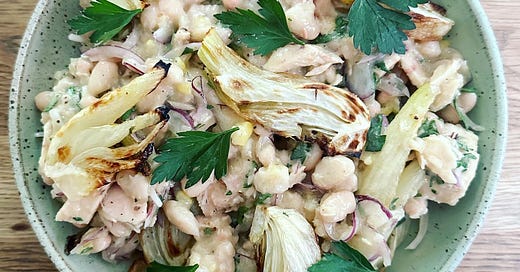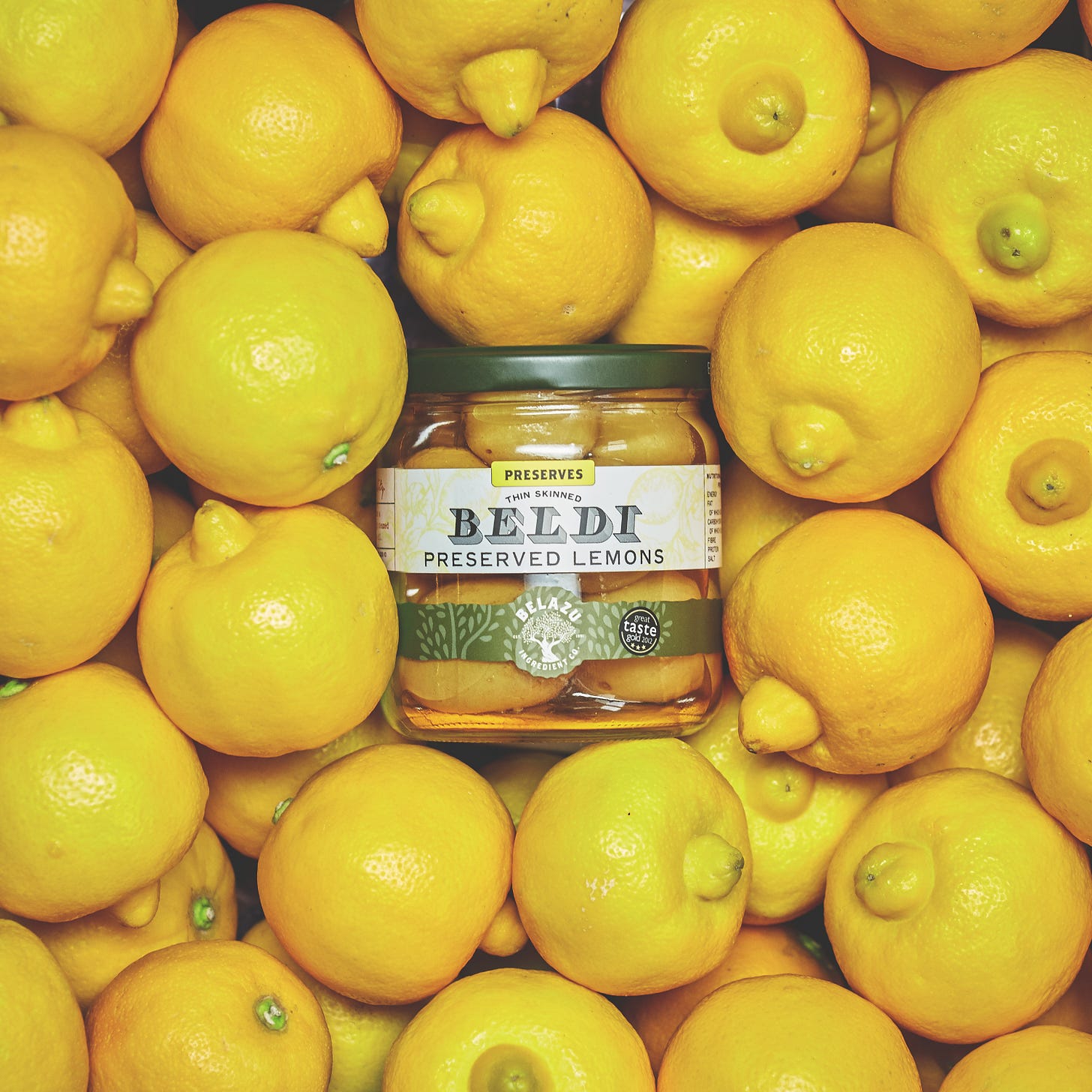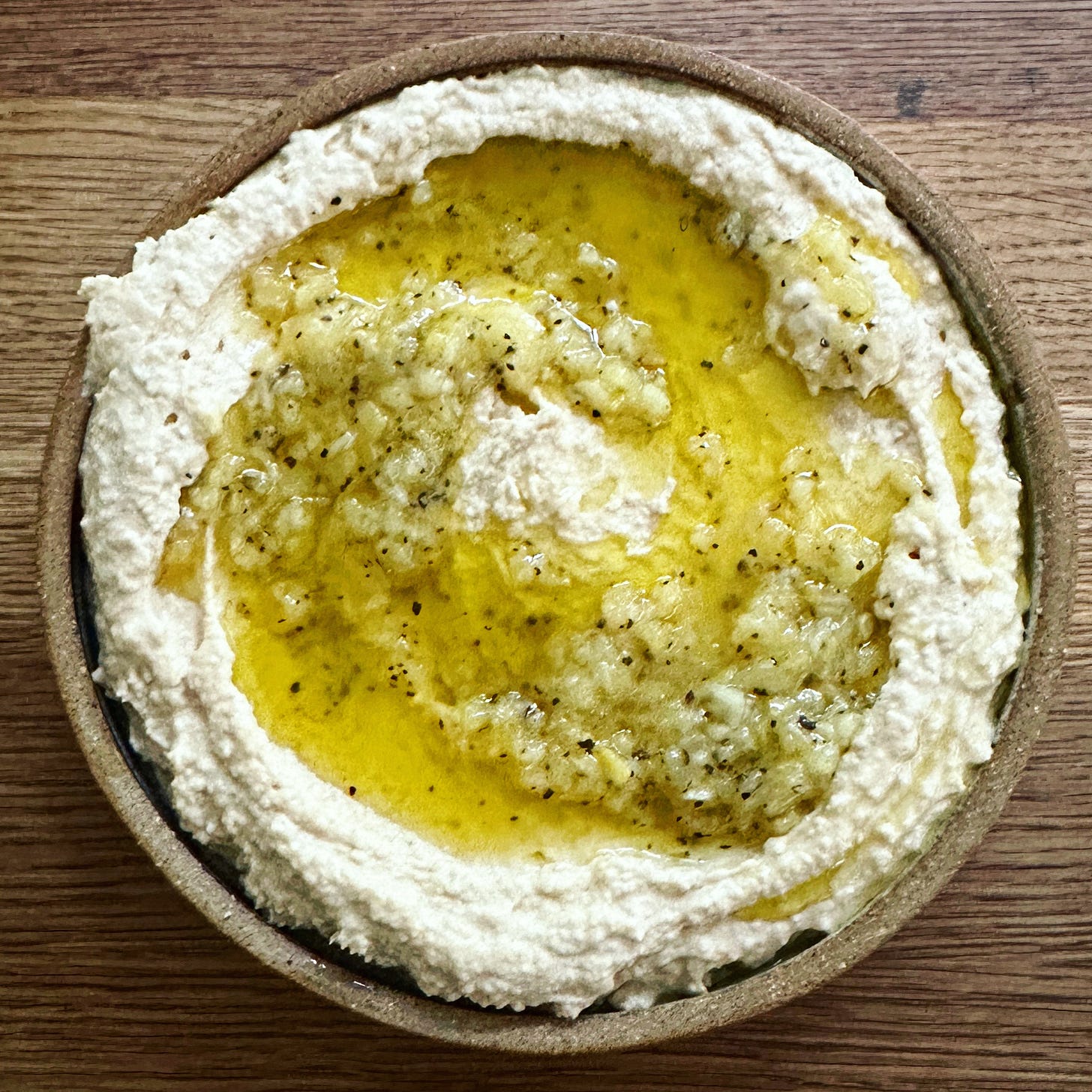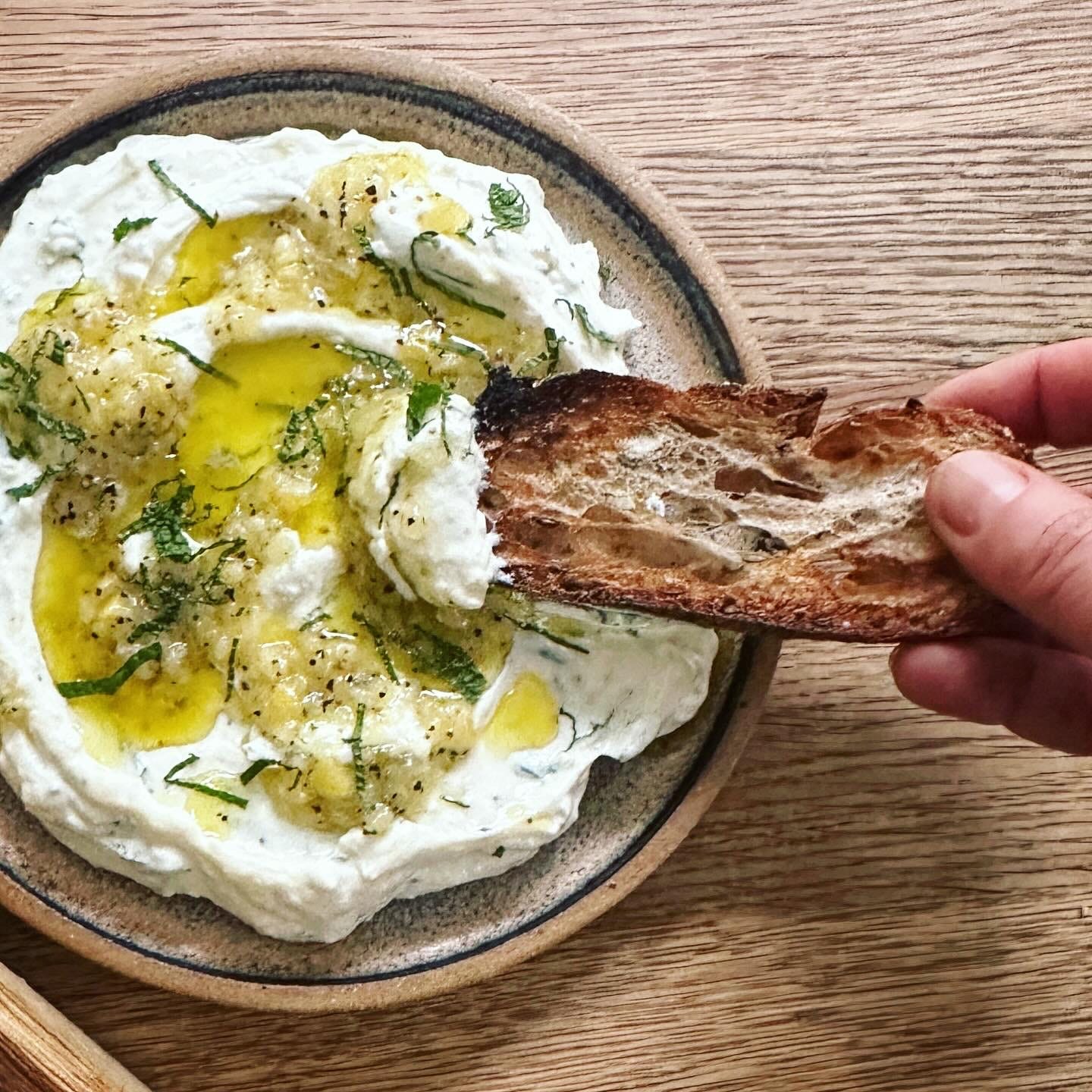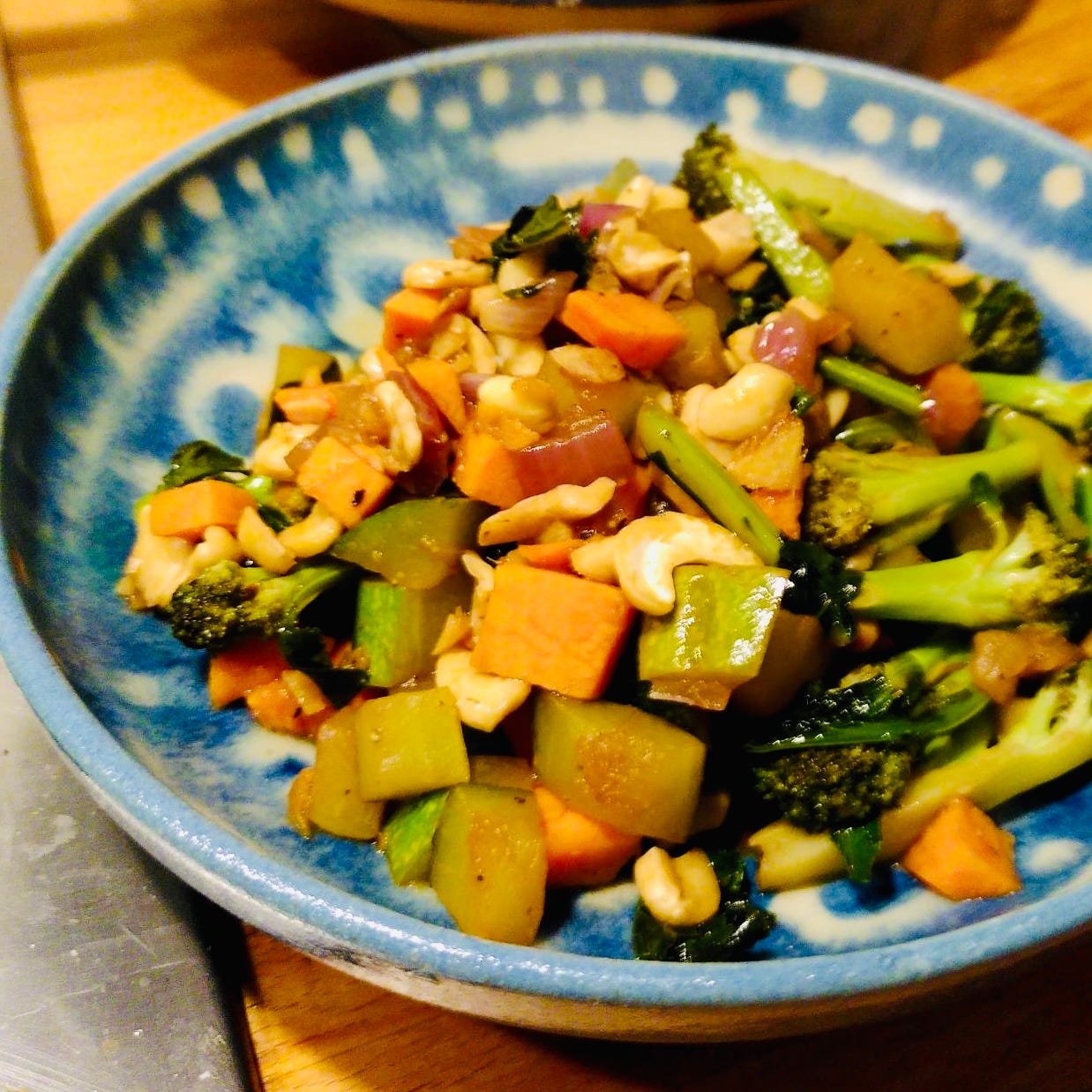In Good Taste #21: Preserved Lemon Salad Dressing
A multi-purpose dressing using your jar of zingy goodness; plus a lovely white bean salad and a yoghurt dip; art appreciation with my 10-year-old neice
Well, hello there! How are you?
Good I hope. Thank you so much for being here.
(Not up for the chitchat? Completely get it. Click the email title to go to a web-based version then jump straight to the recipes or Cultural Fun.)
I’m well thank you and feeling productive again after a week “off” for half term. I may be child-free but, being married to a teacher, our holidays are still circumscribed by the school year.
This one was mainly family-oriented. We had James’s brother Richard, his wife Frin and their two kids, G and D, down to stay at the beginning of the week. The children’s first ever first trip to the capital! I’m inclined to think that there’s not much point spending money on activities when kids are little since everyday stuff is just as diverting. In fact five-year-old G’s top ambitions for her time in London were to ride on a red bus and see a black taxi. Not even to go in the black taxi, just see it. Cheap date.
We did both those things plus a boat too (the commuter one, the most expensive item on the itineray at £8.60 per adult - who needs river cruises?) and then home to make pasta. I’ve never met a child who doesn’t like making pasta. Frin texted me afterwards to say they had both had said it was their favourite part of the visit. A win! (Incidentally, I have written about my brother-in-law’s book, The Jay The Beech and the Limpetshell, before but I mention it again because it’s really great.)
Plus a birthday meal for my mother and museum trips with both her and niece. See Cultural Fun for more info on both.
A quick reminder that if you’re in London and free next Thursday you should come along to Imperial Lates: Future Food where I’ll be teaching people to make sauerkraut alongside Dr Maria Valdivia Garcia from the Department of Metabolism, Digestion and Reproduction talking about her research into fermented foods and gut health.
There will also be all sorts of other talks and displays from Imperial researchers explaining their work on food in an acessible and fun way. The event will run from 6-9pm at Imperial College in Kensington. It’s free but advisable to register for a place in advance. Maria and I will be running three half-hour workshops throughout the evening at 6.20pm, 7.20pm and 8.20pm. If you want to come to one of them you’ll need to put your name down for a spot when you arrive. Hope to see you there!
How to use preserved lemons
In my standard fermentation workshops I cover kraut, kimchi, brine pickles and preserved lemons and the lemons definitely inspire the most questions about how to use them. If you made a jar a few weeks ago they should be nearing readiness and perhaps this question is on your mind too. If so, fret not. Today and for the next few weeks I’m going to be bringing you a whole host of ideas, both savoury and sweet, of what to do with your lemons. (If you didn’t start any preserved lemons, don’t worry, all the recipes will work equally well with shopbought.)
First things first. When are the lemons ready? Texture-wise, the skins should be soft and smooshable between your fingers. Taste a little bit. They should have lost that pithy-bitterness and will have gained some umami alongside the natural zest and acid. You can use preserved lemon wherever you’d use a lemon and it will bring that umami complexity to your dish.
A quick note on the preserved lemons you buy in shops. Belazu is probably the most recognisable brand available in the UK (they actually have a useful page about ways to use them) and were my go-to lemon providers before I started making my own. Although, following sterling work by the likes of Ottolenghi, Sabrina Ghayour and Honey & Co popularising and contextualising the flavour, plenty of other options are popping up too.
Mostly the ready-to-buy jars contain small, whole lemons floating in brine. These are often the thin-skinned Beldi vaiety. Many recipes that use preserved lemons are talking about this type which has a high pulp-to-skin ratio. The pulp tends not to be terribly interesting in flavour so the recipe will instruct you to discard it before chopping the peel. My recipe, uses “normal” lemons from the supermarket or greengrocer, which have more skin. We quartered them so we could squeeze out the juice and added plenty of salt. During fermentaion, the pulp tends to break down, combining with the citric brine to form a salty-sour-lemony goo that coats the peel quarters. You can use it all so don;t need to bother separating and discarding the pulp.
Once my peel is soft enough (between one and three months after starting) I tend to dump the contents of my jar into a bowl. One by one I take the quarters and run a thumb over the pulp side to remove any pips (and whole spices if I used them). I find this so much easier than trying to deseed pre-fermentation. I then blitz the whole lot up in the food prcessor, put it back in the jar and keep it in the fridge. It’s handy to have this readymade paste to add to recipes rather than having to chop each piece of lemon peel by hand.
(Having said that, we’re going to visit a few recipes over the next few weeks that will use thin slices of lemon peel rather than paste. If you think you might want a go at candying preserved lemon peel to decorate a cake, keep a few quarters unblitzed.)
Recipe: Multi-Purpose Preserved Lemon Dressing
Makes enough to dress one large salad or make the yoghurt dip below. But keeps well in the fridge for a week or so scale up as you like.
Ingredients
2 tbsp preserved lemon paste
4 tbsp olive oil
1 tbsp lemon juice or white wine vinegar
2 cloves garlic, crushed
ground black pepper (to taste)
Method
Put all the ingredients in a bowl or jar with a lid and whisk or shake until evenly combined.
Taste and add more acid or pepper if you like.
Toss with your salad of choice or keep in the fridge for up to a week.
Notes (If Ifs And Ands Were Pots And Pans…)
This goes well on all kinds of salads. I particularly like it with white beans (see the next recipe), bitter green leaves or couscous and roast vegetables.
For the flavours to balance you need a little more acid than the lemon paste provides on its own. Hence the lemon juice or vinegar. White wine vinegar gives a slighly more complex flavour than just lemon juice so would usually be my choice, especially on simpler salads. If I’m using it as part of a dip I would go with lemon juice. But use what you have. Either will be lovely.
You can add extra flavours with a tsp of Dijon mustard (which will also help keep the dressing emulsified), chopped fresh herbs or a sprinkle of za’atar.
This dressing also makes a wonderful drizzle or topping for dips. Here it is zhuzh-ing up some supermarket hummus into a fancy-looking snack. Sprinkle on some za’atar for even more glamour.
Recipe: White Bean, Fennel & Tuna Salad with Preserved Lemon Dressing
Serves 2 as a main or 4 as a side.
Ingredients
2 bulbs fennel
olive oil, salt, pepper
1 jar or tin white beans, drained
1 jar or tin tuna steak in oil, drained
1 small red onion, very thinly sliced
1 quantity of Preserved Lemon Dressing (as above)
1 small bunch parsely, picked and roughly chopped
Method
Set the oven to 200°C.
Trim the fennel bulbs then slice them in half vertically. Cut each half into six wedges through the root.
Lay the wedges in a single layer on a lined baking tray, drizzle with olive oil, season with salt and pepper then toss to coat.
Roast for 15-20 minutes until soft adn beginning to brown around the edges.
Meanwhile, mix the beans, tuna, sliced onion, dressing and most of the parsely (save a little bit for garnish).
When the fennel is ready, leave to cool to room temperature then add to the bean mixture and serve.
Notes (If Ifs And Ands Were Pots And Pans…)
Everyone seems crazy about the Bold Bean Co at the moment. I found a jar of their white beans on offer in Sainsbury’s and used them here. They were indeed very nice. Really creamy and well seasoned. Most of the Turkish supermarkets on Green Lanes sell jars of similar white beans for about 89p which are also pretty good and much better value. I find tinned beans great for cooking with but often a little hard and under-seasoned to eat straight from the tin in a salad. If you use a tin, it might be worth tipping the whole contents into a pan and cooking gently for a few mins to soften. Then drain and add to the dressing whilst warm so they soak up the flavour.
I have weaned myself off my fancy fish habit but it’s definitely worth using good quality stuff here rather than your bog standard John West. In oil rather than brine too. It definitely makes a difference.
If it were summer, I don’t think I’d bother roasting the fennel. Instead I would just slice it very thinly and let it sit in the dressing for a while before mixing with the beans etc.
Recipe: Preserved Lemon Yoghurt Dip
Ingredients
500g Greek-style yoghurt
a few sprigs mint, leaved picked and finely chopped
1 quantity Preserved Lemon Dressing (as above)
Method
Put the yoghurt in a bowl. Add the chopped mint (reserving a little for garnish) and half the lemon dressing. Mix well.
When ready to serve, put the yoghurt in a shallow bowl and drizzle with the rest of the dressing. Finish with the mint.
Notes (If Ifs And Ands Were Pots And Pans…)
I always serve this dip at the end of my classes at The Dusty Knuckle along with some of their lovely bread and a variety of krauts and pickles for people to try. But it works well aongside fish, meat or grilled veggies too.
Greek yoghurt should be really thick and creamy. If yours isn’t, put a sieve over a bowl and line it with a J Cloth. Tip the yoghurt in and let it strain for an hour or so. You’ll be surprised how much water comes out and what a difference it makes to the texture.
Dill would work well, instead of - or in addition to - the mint.
You could make this more substantial and tzatziki-like by adding some cucumber too. About half a large one: peeled, seeds removed, finely chopped, salted for half an hour and drained before mixing though the yoghurt.
Cultural Fun
My mother and I visited the exhibition of Palestinian Embroidery at Kettles Yard in Cambridge. It’s finished now but you can still see some of the objects online. The exhibition was obviously concieved of and opened long before the current tragic events in Gaza but some themes of resitance through craft were strangely relevant.
I gave my mother a bowl I’d made for her birthday. I forgot to take a picture of it beforehand but she sent me this one of it in use. That’s my favourite thing about gifting people the pots I’ve made - thinking of them getting workaday use. Obviously some people might not use the things I’ve given them. They might hide them at the back of the cupboard. And that’s fine too. But they can’t stop me thinking about it…
I had a great half term day out with my 10-year-old niece. She had some sort of art project that required proof of museum visits so Aunty Clare planned an itinerary hitting up both London Tates and taking the boat between them. Emma had some good insights into the Tate Britain’s chronologically hung permanent collection, commenting on how much more naturalistic the faces were as we moved from the 16th to 18th centuries. But she had little truck with the modern pieces that are “in dialogue” with the historical ones. “Why?” and “What’s it about?” were oft-asked questions as we encountered dismembered bits of furniture and suitcases with hair. Tbh I didn’t have many answers.
She’s not unmoved by all contemporary works though. We both loved Yasoi Kusama’s Infinity Rooms at the Tate Modern (my second visit and no less magical for it) and we discussed how the mirrors make the experience different for everyone who sees it, touching on not only “What is art?” but “Where is art?” too.
I like the idea of Ask Ugly, the Guardian’s new beauty advice column that interrogates the whole idea of beauty. Jessica DeFino seems smart and funny and I look forward to reading more.
Bye! See you soon!
In the meantime, if you felt like sharing In Good Taste with friends or family who might enjoy it, you can do so with the button below. It would mean the world to me. Thanks so much.
In Good Taste is a Sycamore Smyth newsletter by me, Clare Heal.
You can also find me on Instagram or visit my website to find information about my catering work, cookery lessons and upcoming events.


